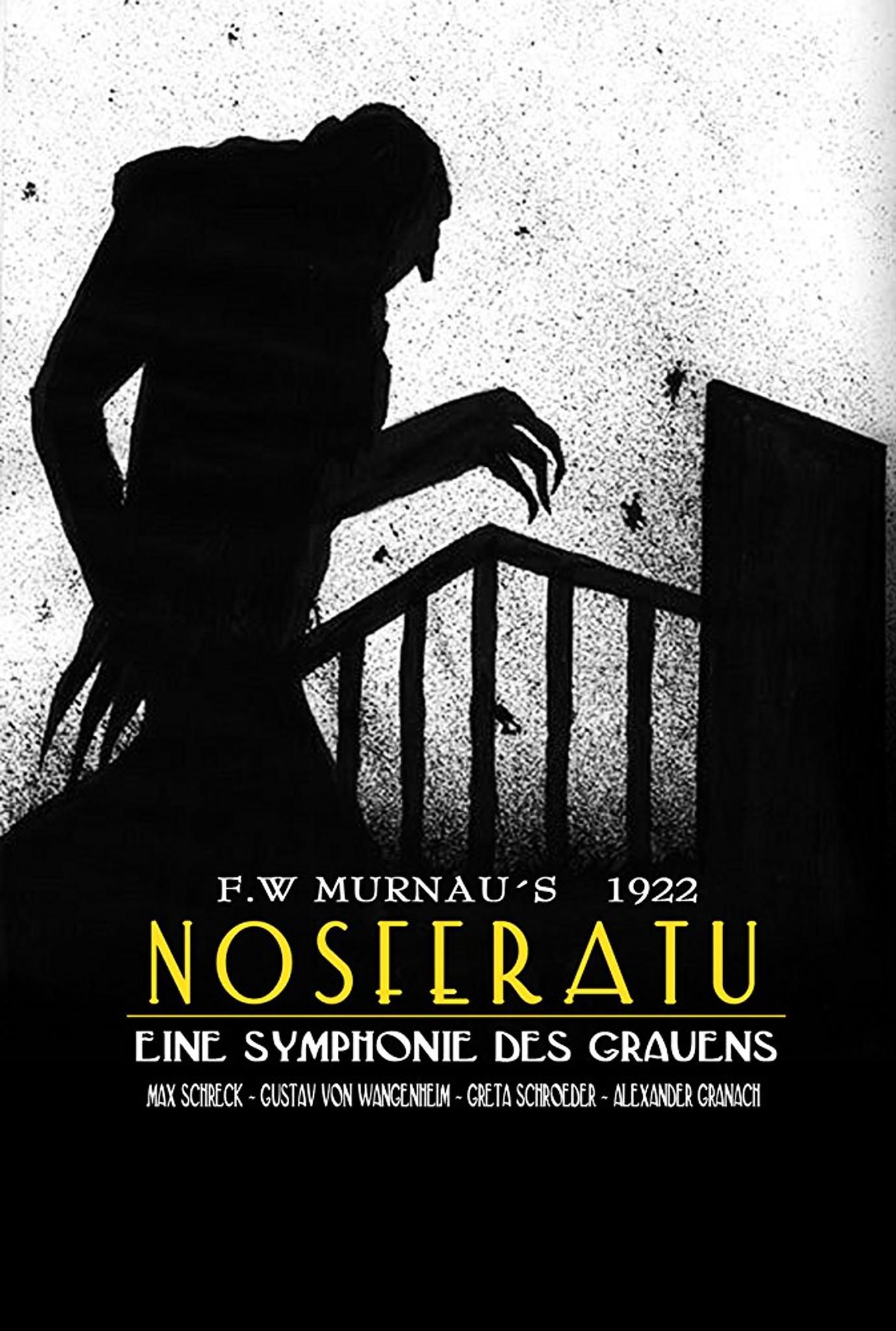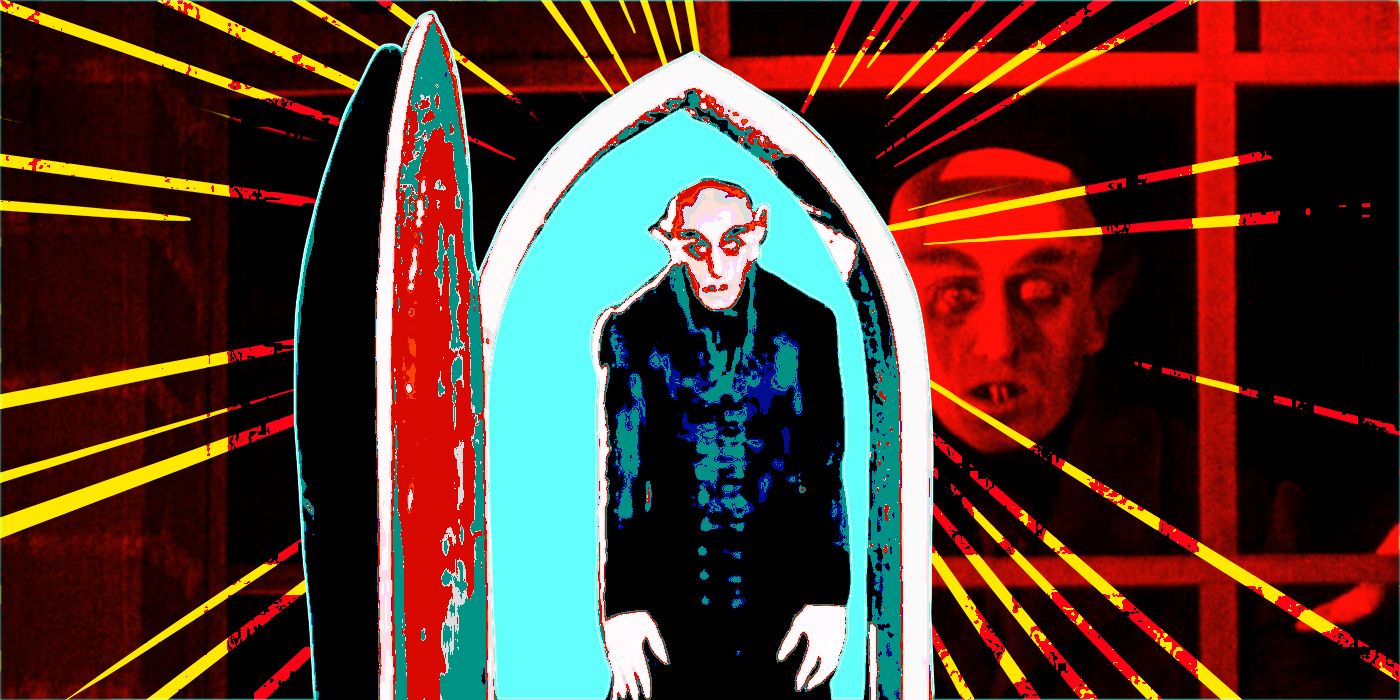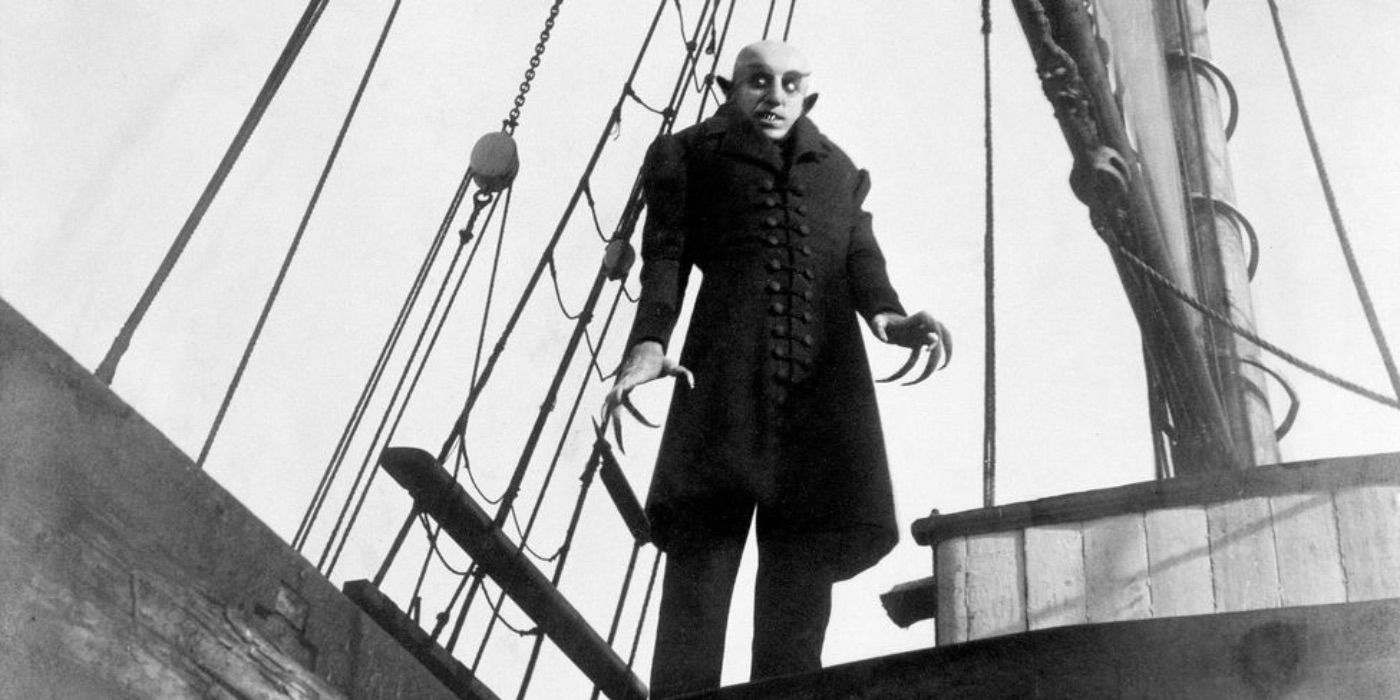The Big Picture
- The film Nosferatu, released over 100 years ago, still delivers a haunting world that few modern horror movies can match.
- Nosferatu is a prime example of the German Expressionism movement, creating unreal, dreamlike worlds that chill audiences.
- Max Schreck's lead performance as Count Orlok is timeless, with his creepy makeup and haunting movements enhancing the film's atmosphere.
The modern horror movie landscape is in a fantastic place. Plenty of filmmakers are cracking the genre, be it brand-new up-and-comers or seasoned veterans. Not only that, tons of films within the genre are being released all the time, be it theatrically, on streaming, or more specifically through the fan favorite streaming service Shudder. Today, we have slashers, ghost stories, elevated horror, aquatic horror, period piece horror, zombies, stylish horror movies, minimalist horror movies, and many more, all coming out several times a week. It is a fun, rewarding time to be a fan. And while horror is as freshly nightmarish as it ever has been, rarely ever do any new entries match the atmosphere of one particular early foray into the genre. That's right, F.W. Murnau's original classic vampire tale Nosferatu is over 100 years old, and to this day, it still delivers a more haunting world than most directors dare to today. Through the lens of the German Expressionist movement, F.W. Murnau brought the world a vampire film that will never die, one that continues to stalk and inspire filmmakers to this day.

Nosferatu (1922)
Vampire Count Orlok expresses interest in a new residence and real estate agent Hutter's wife.
- Release Date
- May 18, 1922
- Director
- F.W. Murnau
- Cast
- Max Schreck , Alexander Granach
- Runtime
- 94 minutes
- Main Genre
- Horror
- Tagline
- The Vampire Lives
'Nosferatu' Was Born of German Expressionism
During the early 20th century, a cinematic movement known as German Expressionism was taking place. This movement was being pushed by several directors who were innovating the cinematic language through groundbreaking, stylish films. Robert Wiene crafted The Cabinet of Dr. Caligari, Fritz Lang sent us to the future with his movie Metropolis, and F.W. Murnau brought Count Orlock (Max Schreck) to the big screen with Nosferatu. This cinematic movement set out to create haunting, unrealistic, dreamlike worlds through warped and painted landscapes, exaggerated lights and shadows, and absurd architectural designs. Films that implemented this style were rarely cheery. The movement thrived with dark, psychological films that were bent on chilling their audiences. This is where Murnau comes in, dialing up the perfect level of this style to deliver the first truly great vampire film.
While most would argue that The Cabinet of Dr. Caligari is the definitive experience in German Expressionism, Nosferatu is the movie that ultimately found the scariest dosage of its trademarks. Caligari is a fever dream, a film madhouse of epic proportions that dials the tropes of the movement up to eleven. It is a visual feast that rarely ever lets up on the eyes, yet hardly ever scares or creeps you out. This is not a knock on the film at all, it just shows where Murnau's picture came into play. Nosferatu rides a fantastic line between reality and warped fantasy like no other, and while it is hard to argue that the film has anything truly nightmare-inducing to shock audiences, its chilling atmosphere is undeniable. A large part of the film is shot as though it is based on reality. Villages look how you might imagine they would at the time, the Transylvanian inn that our lead, Thomas Hutter (Gustav von Wangenheim), visits early on in the movie seems normal, but once we arrive at Count Orlok's castle, that's where the movie's visuals begin to get a bit strange.
Everything About Orlok's Castle Feels Eerie and Otherworldly in 'Nosferatu'
Orlok's domain is a crumbling castle covered in painted shadows and slightly exaggerated architecture. No, it doesn't have the sharp geometry of Caligari's architecture, but everything about the vampire's home feels eerie and otherworldly. Murnau even presents many of our villain's scenes in dark, claustrophobic vignettes that make the story feel like an inescapable nightmare - a fantastic touch. Additionally, Murnau's way of building tension by using long, static shots set the stage for the way that many horror filmmakers shoot today.
The image of Orlock slowly creeping through a shadowy doorway and heading straight for the camera would go on to be replicated in countless films over the next century. Additionally, spooky glimpses of Count Orlock's ghostly complexion radiating from deep within the shadows might seem obvious today, but for audiences in 1922, it was nightmare-inducing. The film was a total game changer, a one-of-a-kind marvel in filmmaking. It is a shame that so many films nowadays lack Nosferatu's approach to amplifying our surrounding elements. Sure, filmmakers like Tim Burton create hyperrealities, but rarely ever do any of these worlds feel as truly immersive as Murnau's due to his mastery of balancing reality with fantasy.
'Nosferatu's Silences Are Maddening in the Best Way
The film also benefits greatly from its silent restraints. Any time Hutter is trying to move quietly through Orlock's castle or the vampire is stalking sailors aboard their own ship, the lack of a soundtrack imbues a maddeningly unnatural silence - maddening in the best way possible.
You feel like you are right there with Orlock's victims, doing your best to be quiet and sneak around him at any chance you are given. It creates a paranoid tone that, once you feel it, it never goes away. This point being given in Nosferatu's favor might seem like a bit of a cheat, seeing that the film was made during the silent era, but these are the circumstances that the filmmakers were given, and they wisely used them to their advantage.
Why Is Max Schreck's Performance as Count Orlock in 'Nosferatu' Timeless?
Yes, F.W. Murnau is the master behind Nosferatu, but the film wouldn't be what it is without Max Schreck's lead performance as Count Orlock. Like many other actors of his time, Schreck can veer into over-the-top territory. His monster makeup is about as creepy as you can get, eyes are often bugging out of his head, and expressions are animated beyond belief. While the silent actor conveys a cartoonish vampire in his expressions throughout much of the film's runtime, the rest of his bodily movements are kept surprisingly reserved. Apart from the fantastic makeup, Orlock's wiry frame and slow, creaky movements make for a visually haunting character. F.W. Murnau is the force that makes Nosferatu truly great, but Max Schreck is why we continue to return to Transylvania to this day.
As time has gone on, Nosferatu has refused to die. Not even the family of Bram Stoker, the author of Dracula, could manage to burn every copy of the film. Murnau's film was an unauthorized adaptation of Stoker's novel, so the author's family took legal action to rid the world of the picture. Against all odds, the film lived on to become one of the greatest horror movies of all time and has continued to inspire filmmakers for generations to come. The novel, Dracula, has been adapted countless times across almost every medium you can imagine, but the original loose adaptation has only inspired one remake - Werner Herzog's Nosferatu the Vampyre. This 1979 retelling is truly sinister, discomforting, and about as great of a remake as you could hope for. Even though Herzog does not fully employ German Expressionistic ideas in the film, his telling is about as close as anyone has come to the original film's atmosphere. This seems obvious, as it is a remake, but you would think that a film as influential as the original would have more filmmakers ripping off its style. Of all the people inspired by this film, 21st-century auteur Robert Eggers seems to most effectively put his love for Murnau's original classic into his work. The director is even taking his love so far as to try and get a new remake off the ground. If The Witch and The Lighthouse have taught us anything, Eggers is the perfect guy for the job, but no matter who takes a crack at trying to tackle the silent classic, no one will be able to match the haunting atmosphere of the original Nosferatu.
Nosferatu is available to stream on Tubi in the U.S.


